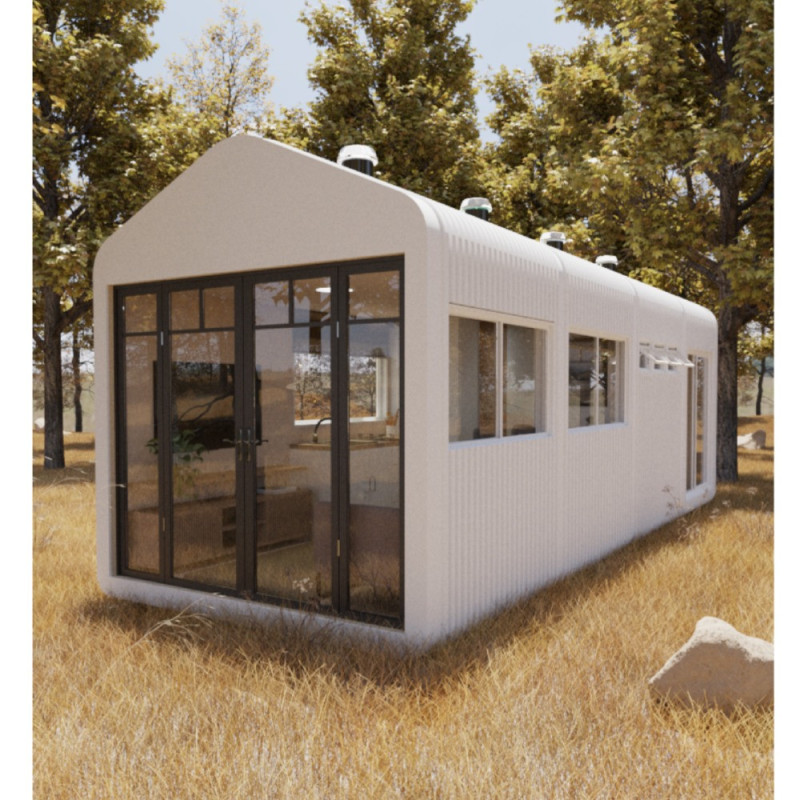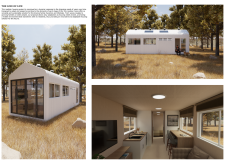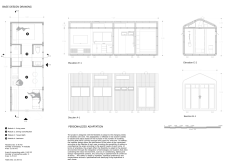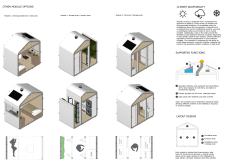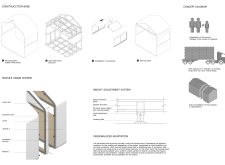5 key facts about this project
# Architectural Design Report: "The Line of Life" Modular Housing Project
## Overview
"The Line of Life" modular housing project aims to address contemporary housing needs by creating flexible living environments that adapt to varying user requirements over time. Located in a rural setting characterized by expansive grass fields and trees, the design fosters a connection to nature while providing a tranquil residential experience. The project is characterized by its focus on adaptability, sustainability, and user-centered living, accommodating a range of residents from young couples to multi-generational families.
## Spatial Configuration
The modular housing solution consists of distinct units that can be adjusted to reflect the changing dynamics of residents’ lifestyles. Each unit is designed to serve specific functions, including a living room, kitchen/dining area, hygiene spaces, and bedrooms. This thoughtful arrangement optimizes daily activity flow while maximizing space utility. The configuration allows for various combinations, supporting individual customization and future expansions based on personal needs.
### Materiality and Sustainability
The design employs a selection of sustainable materials and technologies that contribute to the project's overall eco-friendliness. The exterior is comprised of recycled plastic coated HDPE panels that offer durability and resistance to environmental elements. A light steel frame structure provides a robust yet adaptable foundation that facilitates easy transportation and installation. Interior finishes utilize plywood panels, resulting in practical and aesthetically appealing living spaces.
Sustainable features include solar panels for renewable energy, rainwater collection systems with filters to enhance water efficiency, and tubular skylights that improve natural lighting. These elements collectively reduce reliance on non-renewable resources and promote environmentally conscious living practices. The modular nature of the housing further ensures that adjustments can be made to accommodate shifting demographics and lifestyle preferences, enhancing the overall user experience.


